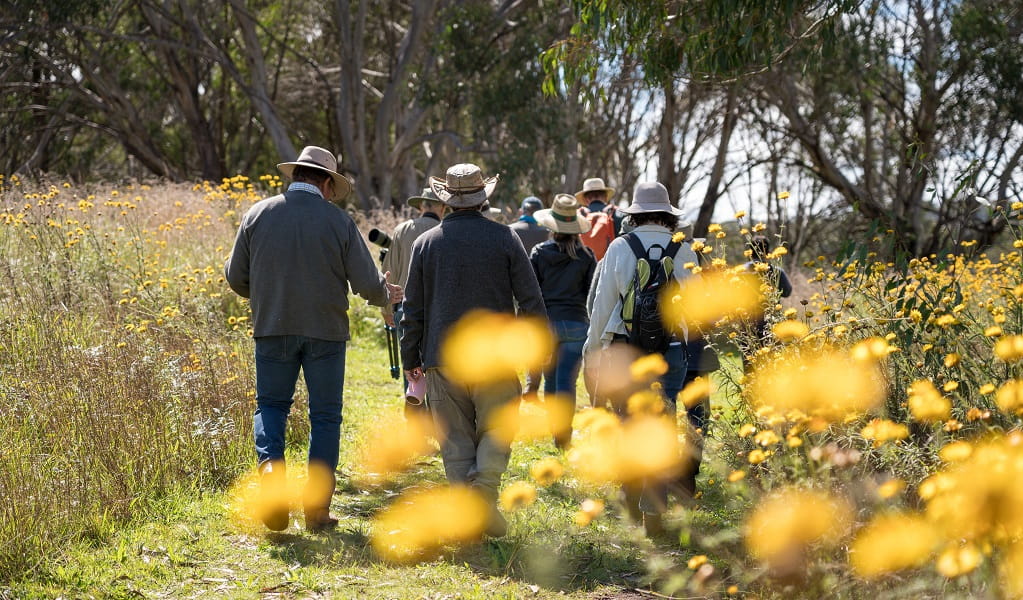Little Llangothlin Nature Reserve
Overview
Little Llangothlin Nature Reserve is easily accessible by driving from Glen Innes and Armidale, making it a great destination for car touring and day trips by the lagoon.
Read more about Little Llangothlin Nature Reserve
Little Llangothlin Nature Reserve is a hidden gem, ideal for daytrippers and those looking to getaway from it all. It’s only a short drive from Armidale and Glen Innes, yet offers superb birdwatching, bushwalking and picturesque places to picnic.
The reserve protects Ramsar-listed Little Llangothlin Lagoon and the surrounding wetlands, one of the few remaining high altitude freshwater lagoons on the New England Tableland. It provides refuge for over 100 species of birds and an abundance of animals, so no wonder it’s a favourite for birdwatching and wildlife enthusiasts.
Enjoy birdwatching around Little Llangothlin picnic area and wander down to the nearby viewing platform. Or go bushwalking along the easy Lagoon Circuit walking track and take advantage of the many great vantage points to admire this spectacular natural setting along the way.
Local alerts
For the latest updates on fires, closures and other alerts in this area, see https://www.nationalparks.nsw.gov.au/visit-a-park/parks/little-llangothlin-nature-reserve/local-alerts
Contact
- in the Country NSW region
Little Llangothlin Nature Reserve is always open but may have to close at times due to poor weather or fire danger.
-
-
Glen Innes office
02 6739 0700
Contact hours: Monday to Friday, 8.30am to 4.30pm. - 68 Church Street, Glen Innes NSW 2370
-
Email: npws.ntab@environment.nsw.gov.au
-
Glen Innes office
Visitor info
All the practical information you need to know about Little Llangothlin Nature Reserve.
Map
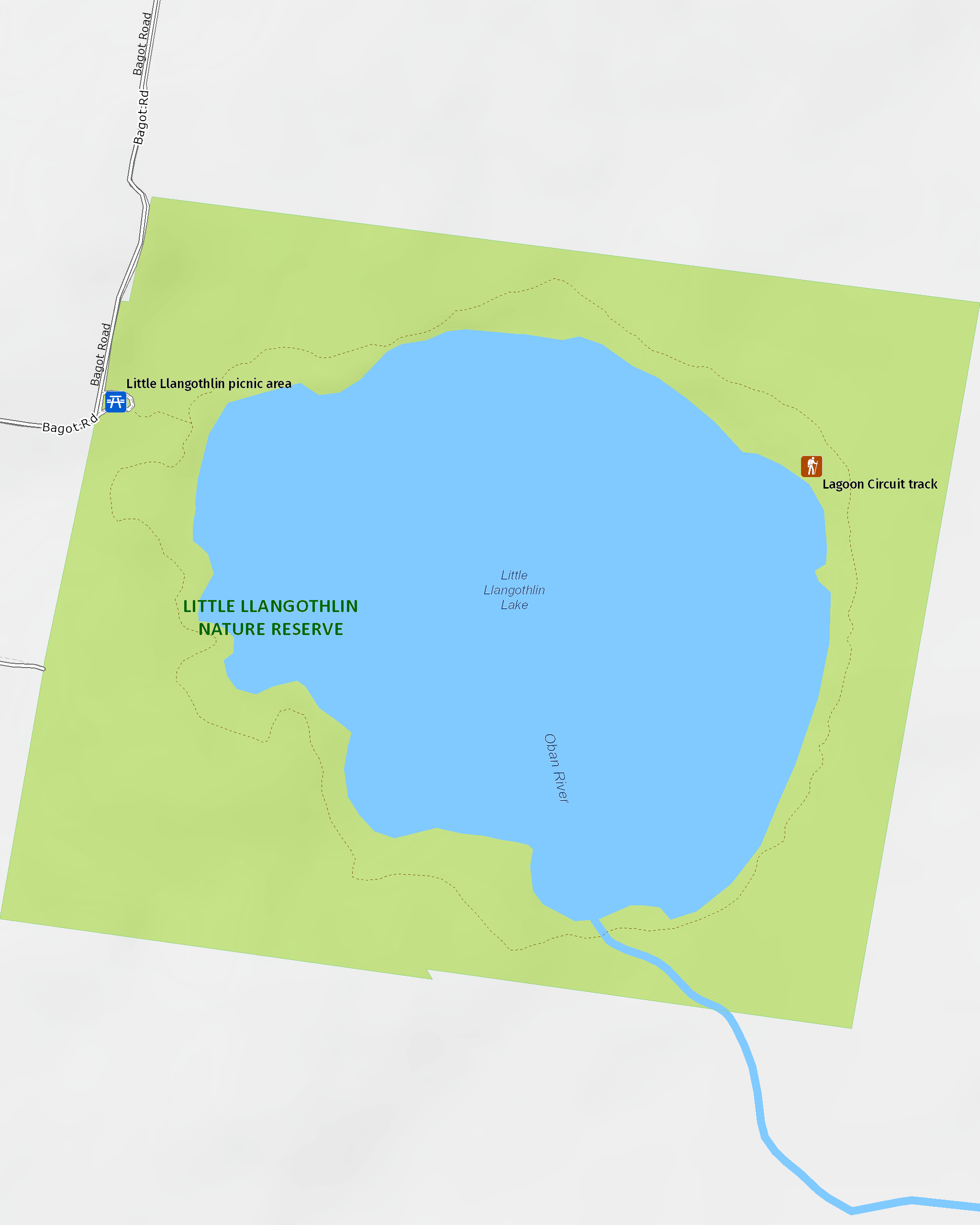
Map legend

Getting there and parking
From Glen Innes:
- Travel south along New England Highway for approximately 42km and turn left onto Tubbamurra Road at the signpost
- Travel for approximately 3km, then turn left onto Bagot Road.
- Continue on Bagot Road for approximately 3.5km to the reserve entrance
From Armidale:
- Travel north along New England Highway for approximately 55km and turn right onto Tubbamurra Road at the signpost
- Travel for approximately 3km, then turn left onto Bagot Road.
- Continue on Bagot Road for approximately 3.5km to the reserve entrance
Parking
- Little Llangothlin picnic area See on map
By bike
Check out the Bicycle information for NSW website for more information.
By public transport
Little Llangothlin Nature Reserve is not accessible by public transport.
Best times to visit
There are lots of great things waiting for you in Little Llangothlin Nature Reserve. Here are some of the highlights.
Autumn
Excellent weather for bushwalking along Lagoon Circuit walking track, with plenty of birdwatching along the way.
Spring
See the lagoon bustle with birdlife, surrounded by green vegetation and spring flowers.
Summer
A great time to enjoy walking and picnicking by the lagoon.
Winter
Rug up and walk around the lagoon for opportunities to spot winter bird species.
Weather, temperature and rainfall
Summer temperature
Average
10°C and 25°C
Highest recorded
31.1°C
Winter temperature
Average
-0.6°C and 12°C
Lowest recorded
-7.8°C
Rainfall
Wettest month
January
Driest month
April
The area’s highest recorded rainfall in one day
300mm
Facilities
Amenities
Toilets
Picnic tables
Barbecue facilities
Maps and downloads
Prohibited
Pets
Pets and domestic animals (other than certified assistance animals) are not permitted. Find out which regional parks allow dog walking and see the pets in parks policy for more information.
Smoking
NSW national parks are no smoking areas.
Nearby towns
Guyra (22 km)
Fishing in one of Guyra's numerous and beautiful streams is a great way to relax and get back to nature. You might land a big trout, too! If you're looking for more active pursuits, you're within easy reach of a number of scenic national parks, where rock climbing, kayaking horseriding and bushwalking are just some of your options.
Glen Innes (50 km)
Set in the most prolific sapphire region of Country NSW, Glen Innes hosts the annual Minerama Fossicking and Gem Show and the annual Australian Celtic Festival, and is home to the Australian Standing Stones.
Armidale (60 km)
During autumn the parks and gardens around Armidale show their beautiful colours. Enjoy a drive along the Waterfall Way, stopping at waterfalls and craggy gorges in the rugged countryside.
Learn more
Little Llangothlin Nature Reserve is a special place. Here are just some of the reasons why:
Ramsar-listed wetlands
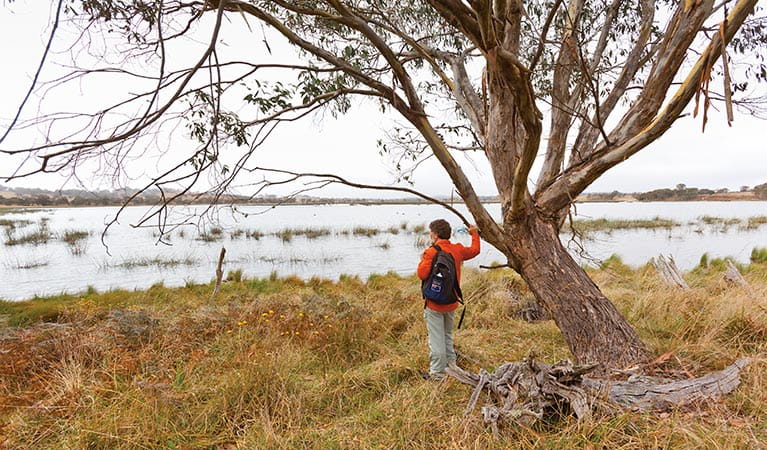
Little Llangothlin Lagoon and the surrounding wetlands are internationally-recognised by the Convention of Wetlands of International Importance, or the Ramsar Convention. This area is one of the few remaining high altitude freshwater lagoons on the New England Tableland and supports a great diversity of plant life including distinct groups of sedgeland, herbland and grassy woodlands. You'll also find tree species such as snowgum, New England peppermint and silver wattle.
Rich in Aboriginal heritage
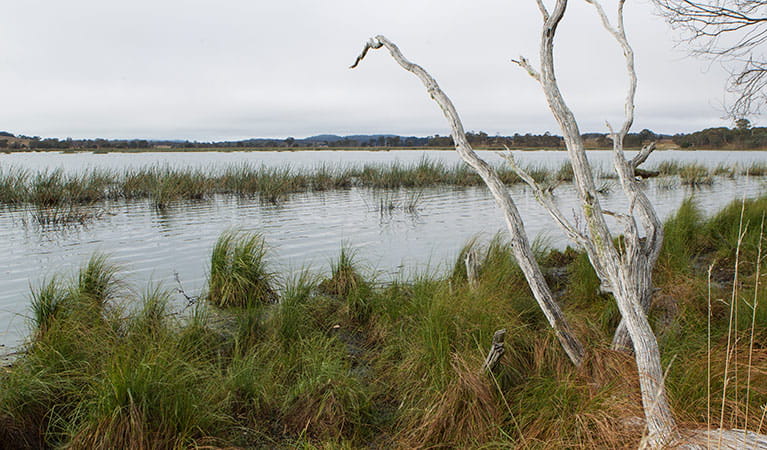
Little Llangothlin Lagoon and the surrounding wetlands were originally home to the Banbai Aboriginal people, who camped by the lagoons seasonally for their water and food resources such as waterfowl, eels, tortoises and grey kangaroos. Today, Aboriginal stories, scar trees and artefacts remind us of the significant Aboriginal heritage of this area, both past and present.
Pastoral historic heritage
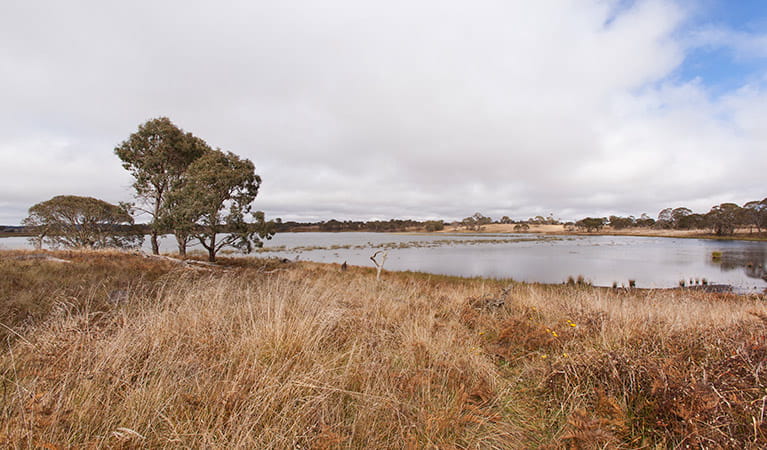
European settlers started moving into the Llangothlin district around 1840 to graze sheep and cattle, and later for wheat farming. The reserve was initially part of a large 50,000-acre sheep property, called Llangollin, but was subdivided in the 1860s for the influx of new settlers. A sluice gate and drainage ditch were used to drain the lagoon, creating additional grazing land. As you explore the reserve, you may see some of the remaining relics of its former life.
Bird watching paradise
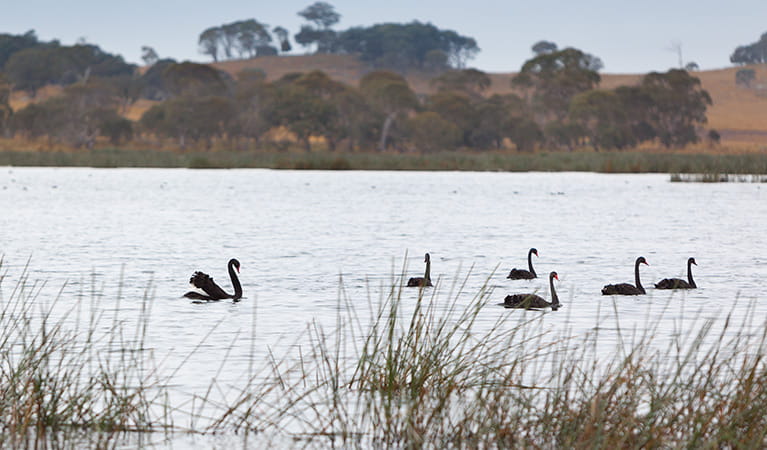
With over 100 bird species recorded here, Little Llangothlin also offers excellent bird watching opportunities. It provides habitats for vulnerable and rare species such as the Australasian bittern, comb-crested jacana and blue-billed duck. The lagoon is also an important drought refuge for many water birds. If you look high above, you could see raptors like brown falcons, nankeen kestrels and white-breasted sea eagles gliding overhead. You'll also find plenty of native animals here, even rare species such as the New England bell frog. The lagoon contains many rare and restricted populations of invertebrates including the only known location of a genus of planktonic flatworms. As well as kangaroos and other land-based mammals, you'll also find water-loving reptiles, such as eastern long-necked tortoises, and water skinks.
- Lagoon Circuit walking track Easily accessible by driving from Glen Innes and Armidale, Lagoon Circuit walking track is an easy 4.8km walk, offering scenic views and excellent birdwatching along the way.
- Little Llangothlin picnic area Little Llangothlin picnic area is an ideal place for a leisurely picnic and makes for a perfect day trip from Glen Innes or Armidale.
Education resources (1)
What we're doing
Little Llangothlin Nature Reserve has management strategies in place to protect and conserve the values of this park. Visit the OEH website for detailed park and fire management documents.

